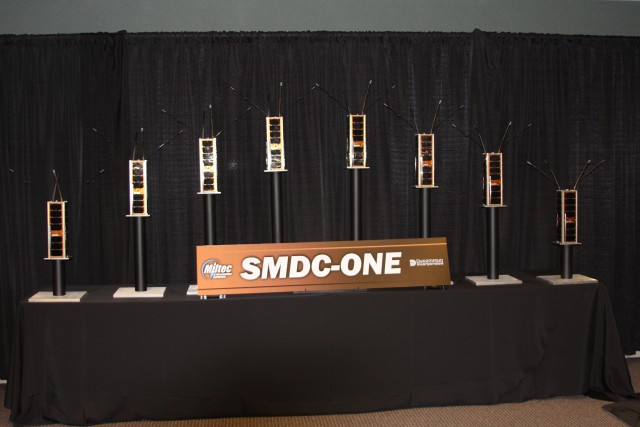REDSTONE ARSENAL, Ala. - The first U.S. Army built satellite in more than 50 years completed its mission Thursday morning as it succumbed to the Earth's gravity and burned up during reentry.
The Space and Missile Defense Command - Operational Nanosatellite Effect, or SMDC-ONE, was launched on Dec. 8 as a secondary payload on a Falcon 9 two-stage booster, a Space Exploration Technologies, Inc, or SpaceX, launch vehicle. The U.S. Army Space and Missile Defense Command/Army Forces Strategic Command is the Army lead for the SMDC-ONE nanosatellite program.
SMDC-ONE remained on orbit 35 days, slightly beyond the original projection of 26-34 days, performing well beyond expectations. There is a large amount of data to review and build upon for the Army nanosatellite program.
"This satellite has wildly exceeded my expectations," said John London, nanosatellite technology manager for the Army Space and Missile Defense Command Technology Center, Huntsville, Ala. "We achieved our mission goals and began achieving our "stretch" goals for the flight," London continued.
The primary objective of this maiden flight was over-the-horizon communications of unattended ground sensor data. The data was from sensors identical to what the Soldiers currently use.
With ground stations a straight line distance of more than 1,000 miles apart in Huntsville, Ala., and Colorado Springs, Colo., the satellite made multiple passes over each ground station daily. Most of the satellite passes over the ground stations were useful and allowed for the transfer of text and image files to and from unattended ground sensors.
The SMDC-ONE nanosatellite is approximately 10 inches long and consists of three, three inch cubes weighing about 10 pounds.
London stated that credit for the successful mission belongs to members of the ground operations teams in Huntsville and Colorado Springs for the dedicated efforts during the mission. Many of the satellite passes over the ground stations were at night and on weekends.
In April 2009, USASMDC/ARSTRAT took delivery of eight four-kilogram satellites at the end of a one-year contract effort lead by Miltec of Huntsville, Ala., Pericle Communications Company, of Colorado Spring, Colo., and Clyde Space Limited of Glasgow, Scotland.




Social Sharing